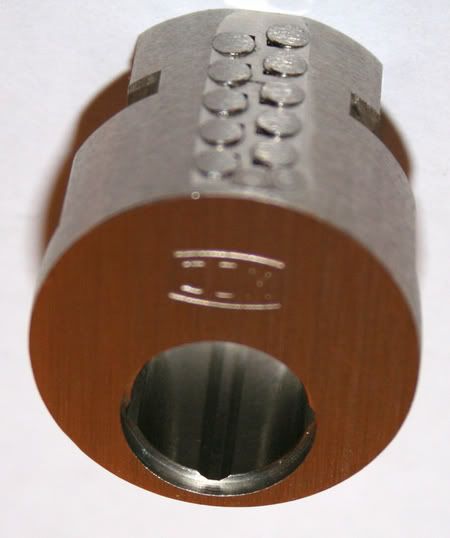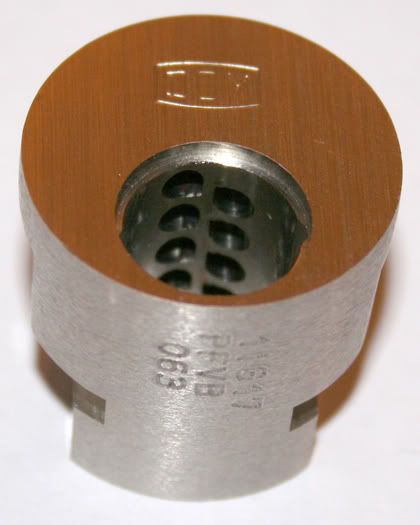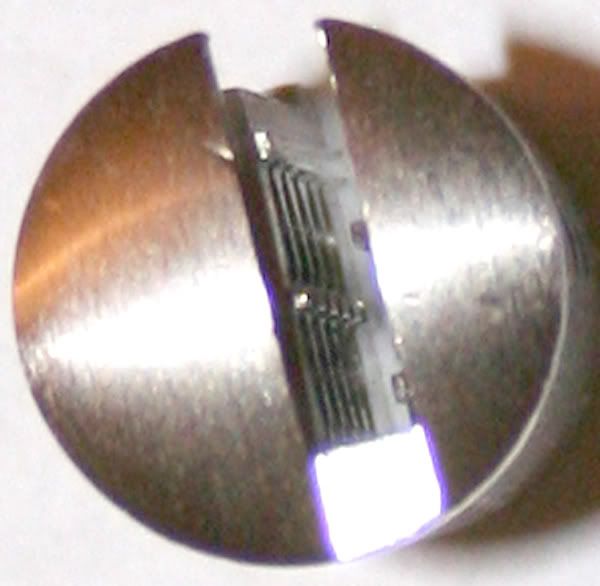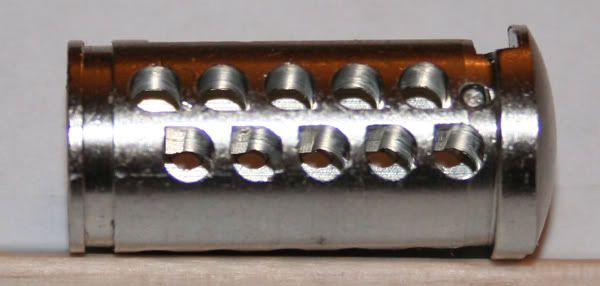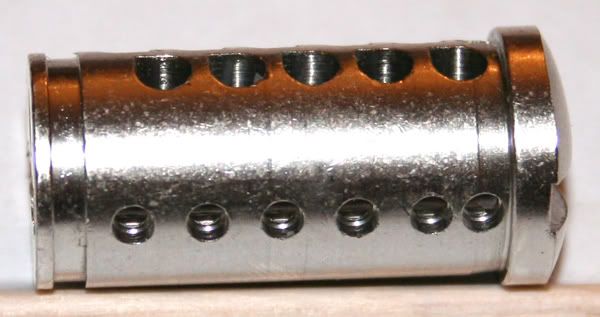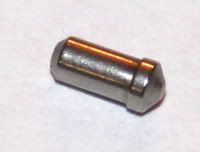As you can see in the images, this is a nice little lock which offers a good amount of pick resistance. There locks I have are all keyed alike, so I am not sure just what variations occur in terms of numbers of pins on the side and bottom of the plug. In my locks, there are two rows five pins along the top of the plug. There are, in addition, positions for 6 side pins and 5 bottom pins. In my locks, only two side positions and and two bottom positions are filled. These side and bottom pins are not spring-biased. They do, however, interact with grooves cut in the side and bottom of the shell. The interesting thing about this design is that they really don't effect picking at all. These are one piece pins, not separated pin stacks as the top pins are. Since both the pins and groves are bevelled, there is nothing to stop the pins from retracting into the plug. Only if the incorrect key is inserted will these pins block rotation of the plug.
There are really two factors that I've found make this lock a tricky pick. First is the shape of the bottom pins (speaking now of primary pins, not the check pins in the bottom of the plug). The chiseled shape makes the pins difficult to interact with. When sitting the lock, the chiseled edge of these bottom pins runs parallel with the direction of the keyway. This chiseled point means that the effective surface area of the pin is reduced, leaving you with little to contact with the pick. Also, due to the nature of the shape, a thin pick slips off the pin quite easily.
The second factor is the wards that run down the keyway. These wards make using a traditional matador rake pretty ineffective, due to the width of the tool. I've made some custom matadors that are much narrower, and in fact, one that has a notch cut in it specifically to accommodate the wards, but it is awkward to set pins none the less.
I have only made one attempt at a bump key thus far, and not had any luck with it as of yet. After repeated attempts to bump the lock, close examination of my key lead me to believe that the angle of cut on my standard drill bits may be too steep. Also, the chiseled edges of the pins tear into the key pretty badly after repeated bumping. For a while I thought this may play in my favor, and I get the impression that it has helped in some way, but not enough that I've been able to actually bump the lock open so far.
Anyway, enough with the blabber: on with the photos. I took these shots with my Canon Rebel XT 8.0MP. The lighting could have been better, but lacking a lightbox, this was what I came up with.
Cheers!
db
